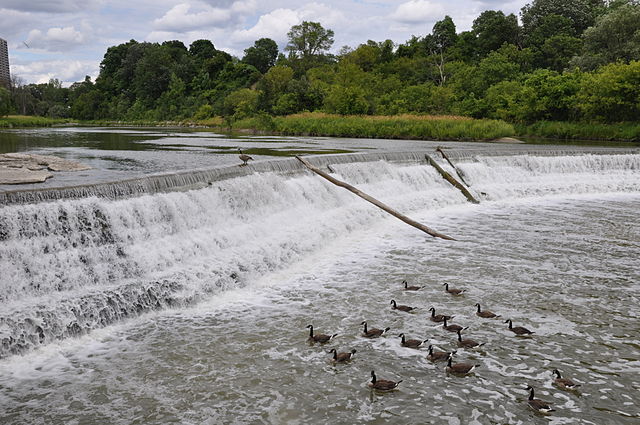Locks and weirs on the River Thames
The English River Thames is navigable from Cricklade or Lechlade to the sea, and this part of the river falls 71 meters (234 feet). There are 45 locks on the river, each with one or more adjacent weirs. These lock and weir combinations are used for controlling the flow of water down the river, most notably when there is a risk of flooding, and provide for navigation above the tideway.
Penton Hook Lock with City of London arms on the House. The green box is the hydraulic control system
Goring Lock demonstrates the common juxtaposition of weir, lock island, lock keeper's house and lock
Choice of Yellow and Red warning boards which are placed on lock gates when navigation is hazardous
Kayaker at Boulter's Weir
A weir or low-head dam is a barrier across the width of a river that alters the flow characteristics of water and usually results in a change in the height of the river level. Weirs are also used to control the flow of water for outlets of lakes, ponds, and reservoirs. There are many weir designs, but commonly water flows freely over the top of the weir crest before cascading down to a lower level. There is no single definition as to what constitutes a weir.
A weir on the Humber River near Raymore Park in Toronto, Ontario, Canada
A weir on the Yass River, New South Wales, Australia, directly upstream from a shared pedestrian-bicycle river crossing
A weir on the Tikkurilankoski rapids in Vantaa, Finland
The broad crested weir at the Thorp grist mill in Thorp, Washington, US








